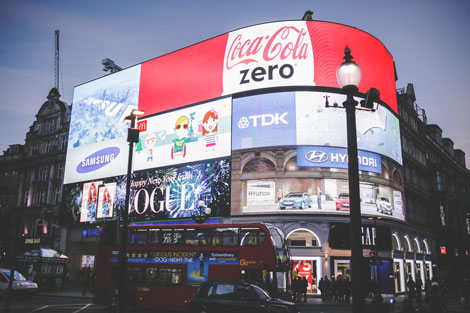
When and why it pays to advertise
Advertising has never been more powerful. Yet for many small businesses the whole subject is often a worry - and rightly so if not handled well. But the upside can bring huge rewards. Strategist Graham Hoy looks at some of the 'don'ts' and far more of the 'do's'.
The 'eyes' have it
If confirmation is needed that people still come face-to-face with offline advertising on a daily basis, recent audience statistics show that traditional media channels continue to attract millions of people. And that can help small businesses to prosper, which is a core Premier Accounts ambition.
Is traditional media heresy in the new digital world? Not at all, explains Graham Hoy. In fact, some of the best advice now being given to would-be advertisers is not to be seduced by the term 'digital'. Advertising in general remains a cost-efficient route to the marketplace, with digital one option - albeit a very effective and powerful one.
Careful planning, very clear goals, and exercising a fair degree of caution are more important, Graham adds. And don't simply grab advertising opportunities because they are cheap! The advertising medium could benefit far more than yourself! But the figures are still positive.

Newspapers and broadcast
Recent figures show that UK national Daily and Sunday newspapers sold 38,707,477 copies on a weekly basis from 31 July to 27 August 2017. Adding in the two big free titles of the Evening Standard and Metro brought the total to 50,207,862, according to the audit source ABC.
Even in net terms (accounting for duplication), it is estimated that, on average, total weekly print reach is 25,400,000 (48% of UK adults), according to NRS (July 2016 - June 2017). Reach within the younger age group of 15 - 24 year olds was lower but still significant at 35%.
As it happens, if we add in the digital coverage of newspapers, the multi-platform reach over a month rises to 90% of all adults (Source: NRS PADD). Because a major contributor to this is mobile, these figures make a clear case for multi-platform campaigns - mobile adds significant reach to print and PC coverage with all titles (for example, 548% with the Guardian and 675% with the Daily Telegraph over a month).

At the same time, some 91.6% - 46,315,000 adults - watched commercial television in the week of 18 to 24 September, according to BARB data. During the second quarter of 2017, 66%, or 35,881,000 adults, listened to commercial radio. This time the figures came from RAJAR.
However, there is an important lesson here. The recent YouGov report "Broadcast to Narrowcast' points out that viewers are now using broadcast content in differing and wider ways. Very importantly, they are discovering programmes via Word of Mouth (WOM). In fact, personal recommendations are now the second most important factor in making programme choices.
For businesses, the advice is that carefully selected broadcast opportunities are still cost-effective, but could be coupled with other activity, such as social media.
The overall lesson is clear - all channels should be considered, including combinations.
Which brings us back to the basic question. How should you begin to put together a marketing campaign that includes advertising?

Marketing strategy
Graham's company, Direct Advertising & Media based in Stretford, specialises in the astute use of advertising as a key component of its five-step Marketing for SMEs programme. The company works closely with the Premier Accounts team to support local enterprises.
The first, he explains, is Business Overview. Having a clear mission statement and understanding of what need you are trying to satisfy is an essential starting point.
The second is Market Positioning. A business needs to understand its market as a whole. That includes its size, audience or different audiences, state of maturity and likely future demand. A competitor benchmark is useful here.
Number three is Target Audience. Audiences need to be segmented by firmographics (looking at industry, turnover, job title and in particular purchasing responsibility) and demographics. Firmographics are essentially to businesses and organizations what demographics are to people. This helps to ensure that communications are sent to the people most likely to respond.
Communication Channels should include not only the obvious choices but also the less obvious. An example is television and radio that might at first sight be dismissed as being too broad and too expensive. Niche channels and programmes, however, might go straight to the target audience.
The final step is Evaluation. The media landscape is fragmented. It is not always easy to attribute a sales success or customer action to a single source. Again as an example, an online purchase might be influenced by exposure to messages delivered by other channels. Realistic performance measures are needed.
Points to bear in mind
"Think about how different forms of media can complement each other and work together,' says Graham, citing radio and online as examples.
"Never use any media purely because it's cheap. Media value is best judged in terms of likely benefit or returns, not just how much it costs.'
In-house v Agency
"Another key decision is whether to use an external supplier, such as an agency or consultancy. If marketing is to be handled in-house, ensure that there is sufficient expertise and be aware of the potentially hidden costs,' adds Graham who goes into more detail later.
Making sure that you can hold a supplier to account is good practice, but only in a constructive way. Criticising for the sake of it, or finding excuses not to pay bills is poor practice. The best approach is to work together transparently.
Businesses considering using specialist agencies should bear in mind that digital strategy is just part of an overall marketing strategy, not an automatic magic bullet.
The first question for many businesses is cost. The second might be 'do we have the expertise in-house'? Expertise means having an individual - or individuals - familiar with all aspects of the marketing mix? At a minimum, this includes branding, creating content, traditional and digital media channels - and all the techniques needed to implement a comprehensive digital strategy.
The honest answer is 'no', says Graham. It is usually a mistake to allocate everything to one person; social media campaigns are perhaps better in the hands of younger employees who are more likely to be Facebook, Instagram and Snapchat users but social media campaigns involve much more than posting content you find interesting!
What is the cost of free?
This is where the hidden costs of 'free' in a digital world have to be paid.
For example, you might decide to have someone in-house dedicated to handling social media campaigns to save money. But remember that there is a time and salary cost and poorly-executed campaigns lose revenue.
Is it really true that one employee has enough free time to manage such a campaign? And if they have, you must still apportion a proportional cost against your business. However, the main hidden cost is the cost of getting it wrong both in terms of reputational damage, plus lost revenue from poorly executed campaigns that is not always easy to quantify. You may never know what you have missed out on.
If employing an agency be clear on a number of issues, says Graham. He warns against being drawn into the "we're the extension of your marketing department' approach. Ultimately, an agency has to be a third-party supplier, no matter how close the working relationship.
He also suggests avoiding the "we offer the complete marketing package/support' line. "No they don't,' he says. "Nobody does, unless they're using a small army of freelancers and specialists.' So, be wary of suppliers claiming that they can do everything. "It's not possible in today's environment,' he adds.
It's also best to be very clear on objectives and the anticipated return on investment (ROI), plus key performance indicators (KPIs). And if you say you are going to pay on 30 days, then PAY. Agencies booking media have to pay up themselves in 30 days. They are not your bankers!
Confirm what you have agreed
Agree on what campaign you expect. Make sure you know your agency's invoice terms - are they adding a reasonable margin? Are they transparent? Also make sure that the work they are proposing on your behalf is for your benefit and not theirs. Would a digital agency ever recommend the use of traditional offline media? They should do!
And if you are using a specialist media company, you must be aware that they will almost certainly have "volume deals' with certain media - so who benefits from these? Are they likely to recommend Media X which helps them to meet a deal volume rather than Media Y which may be more beneficial to you?
At the end of the period in question, which party benefits from a rebate in cash or free inventory - you or them? If you are told that their arrangements are their business, walk away, says Graham. On principle. Consider asking to see the media invoices to your media company. If you feel that this makes you overly untrusting, just explain that it's a standard company procedure recommended by one of your advisers. With programmatic media buying it's important to be aware of any trail of commissions.

Automation where appropriate
One final point. Marketing automation is another buzz phrase. As a positive example, using tools such as software for automated emails should be considered. However, using technology for technology's sake, unless it is adapted to achieve meaningful ends, can be pointless - and costly.
If you need more help or detail, feel free to either contact Graham directly, or a member of the Premier Accounts head office team.
Graham Hoy
Direct Advertising & Media

